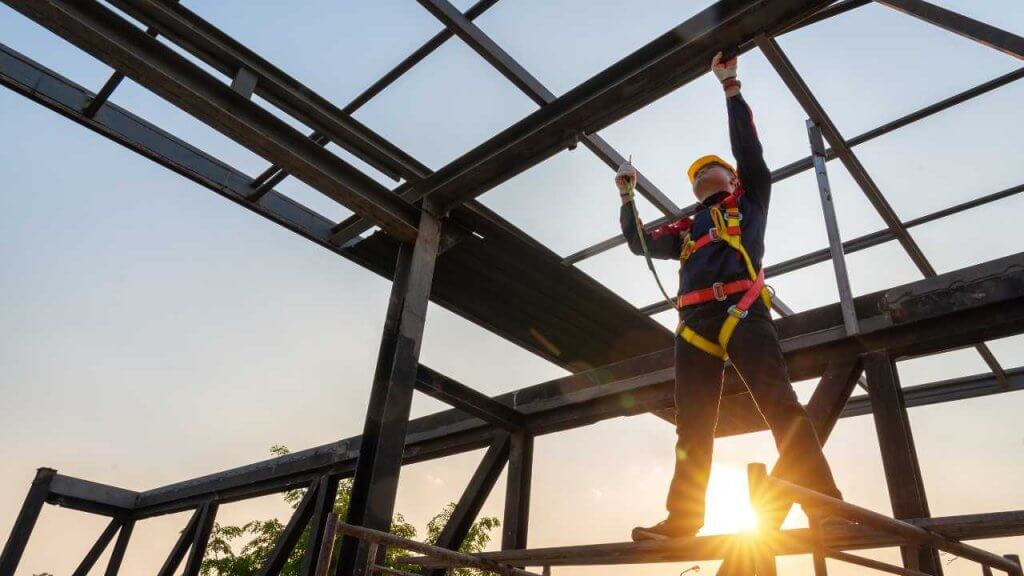Construction sites are dynamic environments where various activities take place simultaneously, involving heavy machinery, intricate processes, and numerous workers. Amidst this bustling activity, ensuring safety becomes paramount to prevent accidents, injuries, and fatalities. As stewards of construction projects, civil engineers play a crucial role in prioritizing and implementing safety measures to create a secure work environment for all stakeholders involved.

Understanding the Risks:
Construction sites present a myriad of risks and hazards that can jeopardize the well-being of workers and bystanders alike. From falls and electrical hazards to heavy machinery accidents and structural collapses, the potential dangers are manifold. Civil engineers must possess a comprehensive understanding of these risks to identify potential hazards and proactively address them before they escalate into safety incidents.
Regulatory Compliance:
In many countries, stringent regulations and codes govern safety standards on construction sites. Civil engineers must ensure compliance with these regulations to uphold legal obligations and mitigate risks. This includes adhering to standards set forth by organizations such as OSHA (Occupational Safety and Health Administration) in the United States or similar regulatory bodies in other regions. By staying abreast of regulatory requirements, civil engineers can implement robust safety protocols and minimize the likelihood of accidents.
Risk Assessment and Management:
Prior to commencing any construction project, civil engineers must conduct thorough risk assessments to identify potential hazards and develop strategies for risk mitigation. This involves evaluating site conditions, assessing the impact of environmental factors, and analyzing the safety implications of various construction activities. By systematically identifying and addressing risks, engineers can proactively safeguard the welfare of workers and prevent accidents from occurring.
Training and Education:
Ensuring safety on construction sites requires more than just regulatory compliance—it necessitates a culture of safety ingrained within the workforce. Civil engineers play a pivotal role in promoting this culture by providing comprehensive training and education to all personnel involved in the project. This includes instruction on proper use of personal protective equipment (PPE), training on equipment operation, and awareness programs on hazard recognition and prevention. By investing in ongoing training initiatives, engineers can empower workers to prioritize safety at all times.
Implementing Safety Protocols:
Effective safety management on construction sites entails the implementation of robust safety protocols and procedures. Civil engineers must develop site-specific safety plans that outline protocols for emergency response, hazard communication, and accident reporting. Additionally, engineers should conduct regular safety inspections and audits to identify potential hazards and ensure compliance with established safety standards. By proactively addressing safety concerns and reinforcing adherence to protocols, engineers can create a safer working environment for all stakeholders.
Embracing Technology:
Advancements in technology have revolutionized safety practices in the construction industry. Civil engineers can leverage innovative tools and technologies such as drones, wearables, and IoT (Internet of Things) devices to enhance safety monitoring and risk management. Drones, for instance, can be used for aerial inspections to identify potential hazards, while wearable devices can track workers’ vital signs and alert them to dangerous conditions. By embracing technology-driven solutions, engineers can augment traditional safety measures and further enhance workplace safety.
In the realm of construction engineering, safety is not just a priority—it’s a fundamental responsibility. Civil engineers serve as guardians of safety on construction sites, tasked with ensuring the well-being of workers, bystanders, and the broader community. By understanding the risks, adhering to regulations, conducting thorough risk assessments, providing training and education, implementing safety protocols, and embracing technological innovations, engineers can effectively mitigate hazards and create a culture of safety that permeates every aspect of construction projects. As we continue to push the boundaries of innovation and progress in the construction industry, let us never lose sight of our most fundamental obligation: protecting human lives through unwavering commitment to safety.



